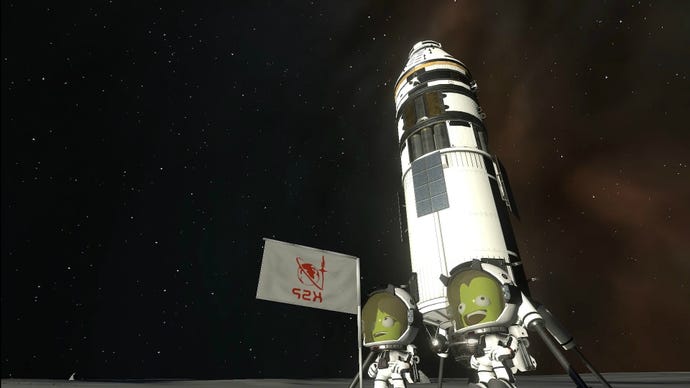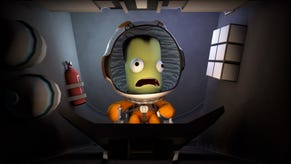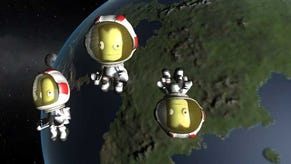Kerbal Space Program 2's Creative Director Talks Expanding the Universe Without Losing the "Secret Sauce"
Keeping everything grounded, except the Kerbals.
This article first appeared on USgamer, a partner publication of VG247. Some content, such as this article, has been migrated to VG247 for posterity after USgamer's closure - but it has not been edited or further vetted by the VG247 team.
Space is the final frontier, but there are still reaches of it that haven't been explored by the daring and mortally ambitious Kerbals who staff the Kerbal Space Program. By creating a sequel to the breakout rocket-science simulator, you'd have to wonder what there's left to explore in the vast void of the universe. As it turns out, there's a lot; but keeping the core that made Kerbal Space Program such a hit is as crucial as what new ground it might break.
We got a guided, hands-off tour through the changes coming to the little green astronauts' spacefaring facilities at PAX West 2019, before sitting down with Kerbal Space Program 2's creative director Nate Simpson. A longtime fan with thousands of hours in the first game, Simpson is helming the journey ahead for Kerbal 2, which will incorporate multiplayer, base-building, orbital colonies, and interstellar travel. It's an undertaking that, as Simpson notes, required starting from the ground-up, rather than building on top of the existing framework of the first Kerbal Space Program.
"I, like many people in the community, have got that wishlist of things that I would want to see in the Kerbal universe," Simpson says. "And that wishlist includes things like interstellar travel, multiplayer, colonies; all of which require a pretty fundamental overhaul of the underlying architecture in order to make possible because it's an immensely complex game."
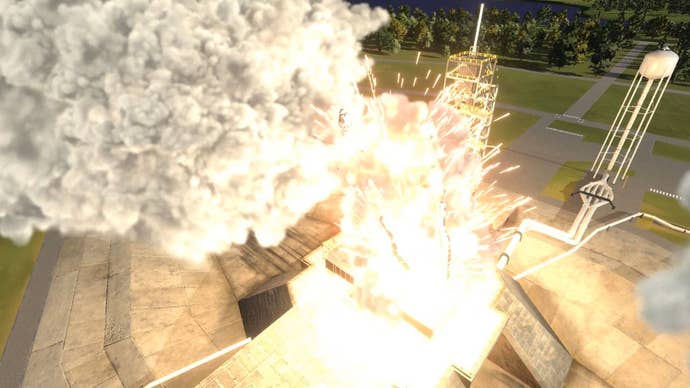
Kerbal Space Program 2 is looking to expand Kerbal exploration out to the stars with interstellar travel, but to make a ship like that, it doesn't just take a revision of the original game's systems. You're going to need new ways of building ships, without the hassle of gravity or space constraints. Luckily, space itself holds the key. Not only can you build new bases, both on far-flung planets and orbiting celestial bodies, but you can eventually construct new rockets and vehicles there. Rather than launching in sections and constructing in space similar to the real-life construction of the International Space Station, construction can take place in the vaccuum of space, saving you on costly fuel and tricky engineering maneuvers.
At the core of it all, it has to be about the Kerbals. No one's space program is free from explosion and disaster, and if each launch was as dire as a Hollywood movie like Apollo 13, Kerbal Space Program would be an extremely somber, sad game. But the blind optimism of the Kerbal space force is the charm that turns failed launches into hilarious Wile E. Coyote gags, and reminds you that failure is okay.
"It's absolutely the secret sauce that makes the game work," Simpson says of the guileless Kerbals, "because the game is all about failure. Constructive failure. Failure is mandatory. That iteration is critical to learning how to succeed in this game, and learning the fundamental rules of the universe of the game, which happen to also be the rules of our real universe."
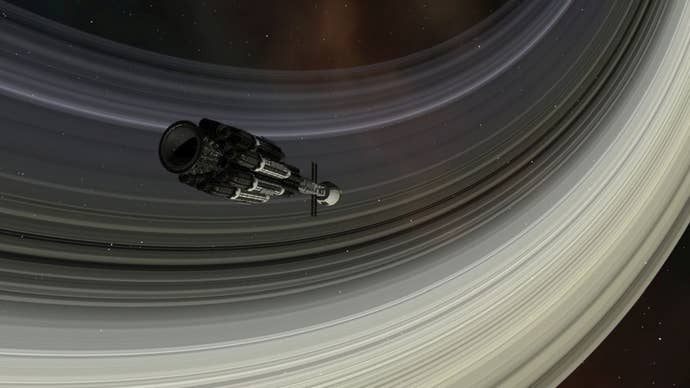
And while Star Theory is looking ahead to technology humankind has yet to fully establish, like orbiting shipyards, the team is trying to determine some level of what the future may look like within the bounds of Kerbal space. Simpson says the team regularly consults experts on subjects like propulsion and celestial bodies, as well as aerodynamicists, all to keep things in check.
On the first day of work on Kerbal Space Program 2, Simpson sent a list of what can't be in the game to the studio. No warp gates or warp drives. No faster-than-light travel. Everything has to be rooted in real science. Whether that ends up being true or not, he wants a future-facing work that will be defensible to the realities of space travel over the coming years.
"It's my hope that when people are flying around using metallic hydrogen rockets 50 years from now, and those rockets look dissimilar to the ones that we actually put in our game, at the very least they look at what we did and they understand where our assumptions were coming from," Simpson says.
What does that future hold for Kerbal Space Program, both its sequel and the still-played originator? Simpson says the current plan is to still support both iterations. But for the team on Kerbal Space Program 2, plans are already in place to keep the game scaleable and moddable, keeping the pioneering spirit alive that carried the first game for so long. The first Kerbal Space Program was a breakout space sim about cartoon astronauts and hilarious failure in the pursuit of boldly going where no Kerbal had gone before. Kerbal Space Program 2 looks to go even further, and hopefully still have as long a lifespan as the first.
"Since the original game has remained evergreen, it's an eight year old game and has a thriving community," Simpson says. "We hope that eight years from now [Kerbal Space Program 2] is as thriving as KSP1 is now."
Disclosure: USgamer is owned and operated by ReedPop, which also runs the PAX family of shows.
